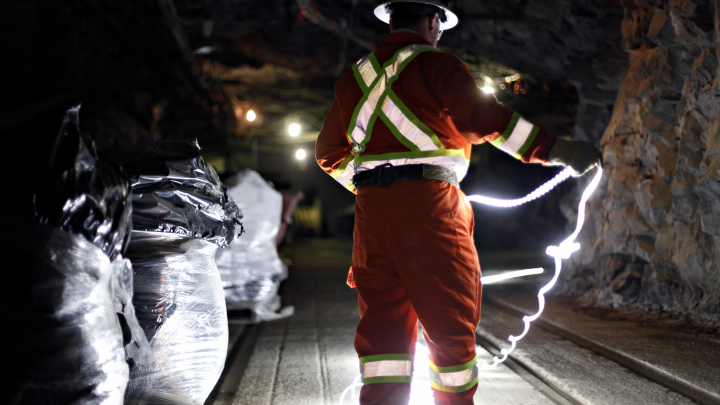
The Role of LED Lighting in Reducing Energy Costs for Mines
With inflation rising and the concern for the planet’s longevity, energy efficiency is one of the hottest topics in many sectors. In the mining industry specifically, energy consumption is a significant concern.
Lighting plays a huge role in mining operations for both the safety of workers and productivity. The more efficient the lighting systems, the better a mine can function. However, traditional lighting systems just don’t fit the bill anymore for mines that want to bring their operations into the future. This is where LED lighting solutions come in.
LED lights offer a variety of benefits for mines, including reduced energy costs. Let's dive into how LED lighting is not only a practical choice but also a green choice.
Energy Efficiency
Energy efficiency and environmental sustainability go hand in hand. x-Glo’s LED lighting is way more energy efficient compared to conventional lighting technologies. This is because LED bulbs consume significantly less energy while producing more luminosity.
The lights in mines need to be extensive – cutting corners eventually catches up to mining companies. In the long run, adopting LED lighting systems can result in impressive savings as these lights convert a higher percentage of electrical energy into visible light, minimizing the amount of energy that’s wasted in heat.
This has the knock-on effect of creating a greener future.
Durability and Longevity
How much is your business spending on light repairs, replacements, and maintenance? Mines have harsh conditions which can wreak havoc on lights and other equipment. This is why investing in tough LED lighting systems is the way to go for reducing costs.
x-Glo’s LED lights are corrosion resistant, impact and shock resistant, ultra-flexible, fire retardant, and suitable for high humidity environments, making them ideal for the demanding environment of mines. Traditional lighting options such as incandescent or fluorescent bulbs just don’t measure up next to LEDs.
LED lights also have a long lifespan, far exceeding that of conventional bulbs. For example, the x-Glo Exm range has a life span of over 50,000 hours – this lighting strip is designed to be energized 365 days a year, 24 hours a day.
In a mine where consistent, reliable lighting is a must, the longevity of LED lights translates into cost savings in terms of reduced replacements, labour, and downtime.
Flexibility And Adaptability
One of the best features of x-Glo’s lighting solutions is their flexibility. Our LED strip light can be easily installed in various locations within mines, including tunnels, shafts, and open pits. The light strips can be bent and cut to fit a variety of situations, which can significantly reduce costs as alternative systems for tricky circumstances don’t need to be found.
x-Glo’s LED lights come with advanced control systems, allowing for intelligent lighting management. With these systems – including sensors, different colors, and automated scheduling – mines can optimize their lighting usage and therefore reduce costs.
Environmental Benefits
The reduced energy consumption of LED lights leads to a decrease in carbon emissions, contributing to environmental efforts. By transitioning to LED lighting, mines can align with green initiatives, reduce costs, and improve their overall environmental footprint. It’s a win-win-win. “LED panel lighting are highly energy efficient and can save around 90% electricity as compared to incandescent lights and 50% as compared to CFLs. Low energy consumption reduces the load on electric power plants, which in turn reduces the amount of fuel being burnt to generate electricity,” tells Environment.
x-Glo takes this further as our lighting systems are also recyclable.
Choosing x-Glo’s LED lighting systems results in so many benefits for mines, including reduced carbon emissions, and improved safety and productivity, while also reducing costs.